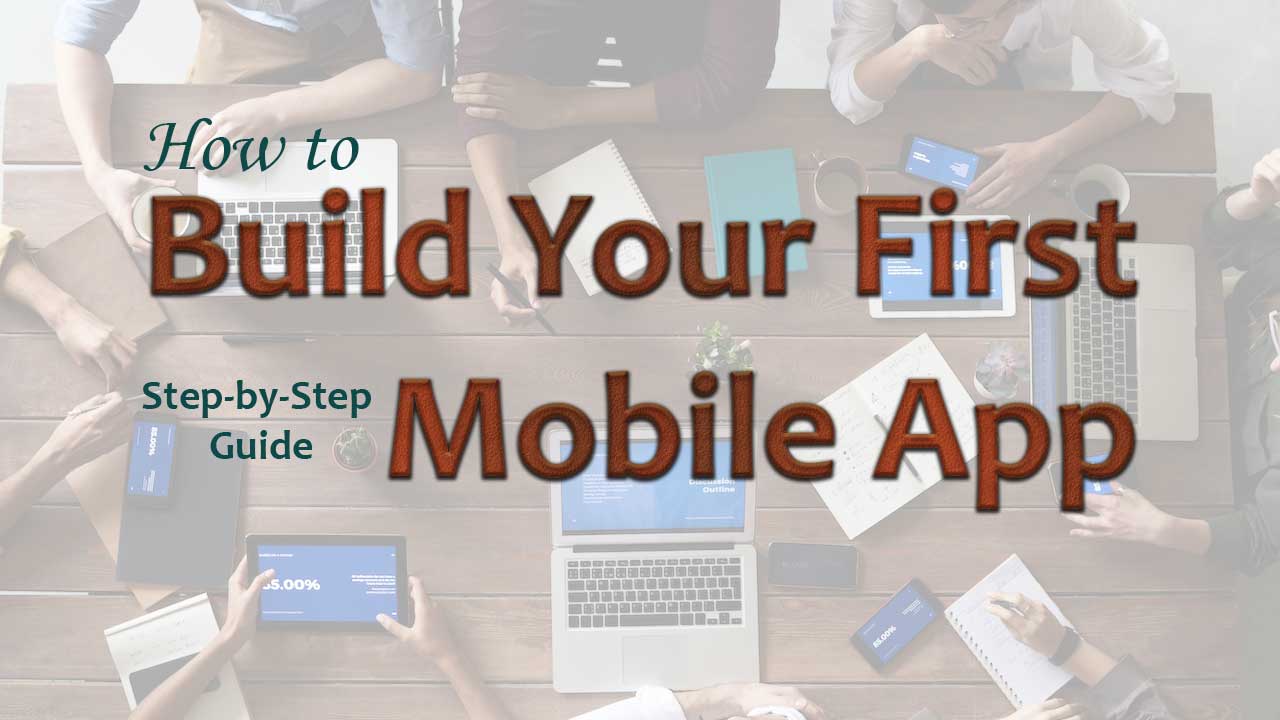How to Build Your First Mobile App – Step-by-Step Guide
There’s no excuse not to have a great app in today’s mobile world! If you want to tackle your competitors or make a lead, then a mobile app is the need of the hour. This article will explain “How to Build a mobile app for your project”.
Mobile apps are the future of business. They have the potential to make your business more accessible to your customers and provide them with a better experience. Therefore nowadays, it is crucial to have a mobile app for companies to stay ahead of the competition.

There’s no doubt that developing an app isn’t easy and demands a lot of time and effort, but that’s no excuse for not having a good app.
You need to take many steps to create a successful mobile app. For, e.g., choosing the best platform for your app, deciding on what features you want it to have, developing wireframes, designing layouts, integrating features such as push notifications, etc. This step-by-step guide will guide how you can create a fantastic user-friendly interface and enhance the user experience for your app. Let’s make your own mobile app.
Table of Contents
App Functionality
Creating a mobile app can be daunting, but it doesn’t have to be. By clearly defining your app’s purpose clearly, you can make the process much more straightforward and ensure that your app is successful.
Is there a specific purpose you want your app to fulfill? For example, you may need an app to run your eCommerce business. It is vital that you answer this question first. What is the purpose and idea behind creating the app? Once you clearly understand this, you can determine which features your app will need and how to best design it for users.
Remember that your app doesn’t have to be perfect from the start. You can always add new features and improve upon existing ones as you go. The most important thing is to start and learn as you go. With some planning and effort, you can create an excellent mobile app that people will love!
Design for iOS or Android Platform
Your app is only as strong as the platform you choose to support. Regarding mobile app development, you need to consider whether you want to design for iOS or Android…or both.
There are benefits and drawbacks to both platforms. iOS is a closed system, which gives you more control over the user experience and limits fragmentation. However, it also means you’ll have less access to the vast array of Android devices.
Android is an open system, which gives you more flexibility in terms of design and customization. However, it also means that you’ll need to account for various devices and screen sizes.
The best way to decide which platform to support is by looking at your target market. Designing for both platforms takes more time and effort, so it may be best to choose one platform and go from there if you’re just getting started.
Create a Wireframe: This is your app’s skeleton to build a mobile app using Wireframe; it’s essential to create a Wireframe. This will be the skeleton of your app and will help you determine what features and pages are necessary.
To create a wireframe, start by sketching out the different screens of your app. What information will each screen contain? What buttons or links will users need to be able to navigate between screens? Once you have a basic layout idea, you can create a more detailed wireframe using software like Balsamiq or MockFlow.
Creating a wireframe is essential in business mobile app development, as it will help you save time and resources. By planning your app’s structure and layout beforehand, you can avoid making changes later on that could result in costly delays. Wireframes are helpful for developers and designers as they provide a clear roadmap for building the app.
Start Coding: The fun part!
After you have ready your app’s design and chosen the right development platform, it’s time to start coding! This is the fun part: you see your app come to life.
To code your app, first, you should choose a programming language. There are many different languages to choose from, so research what is best for your app. Once you’ve decided on a language, it’s time to start writing code! If you’ve never coded before, don’t worry – plenty of resources are available to help you get started.
- Test, Test, Test!: Wait to launch until you’re sure it’s ready.
With any new product, testing and testing again before hitting the launch button is essential. The same goes for mobile apps. You want to be sure that your app is ready for the world before you release it. Test the app on different devices, operating systems, and screen sizes. Wait to launch your app until you’re sure it’s ready. Once it’s live, people will start using it, and if there are any problems, they’ll be quick to point them out. So take the time to test your app thoroughly before making it available to the public.
There are a few things you should keep in mind when testing your app:
- Make sure that all the features of your app work correctly.
- Test for any bugs or glitches that could cause problems for users.
- Ensure your app is compatible with all the major platforms (iOS, Android, etc.).
Once you’ve gone through all these tests and you’re confident that your app is ready to go, congrats – you’ve just created your first mobile app!
Interested in outsourcing mobile app development?
With some planning and effort, you can build a great mobile app by following this step-by-step guide! But, if you still need to be more confident in developing your mobile app, fear not. Delaine, the USA’s top mobile app development company, is here to help. We offer world-class mobile app development services that cater to your specific needs. With a team of experienced developers well-versed in the latest technologies and trends, we provide you with a high-quality product that meets your expectations. Please find out more about our services by contacting us today.





